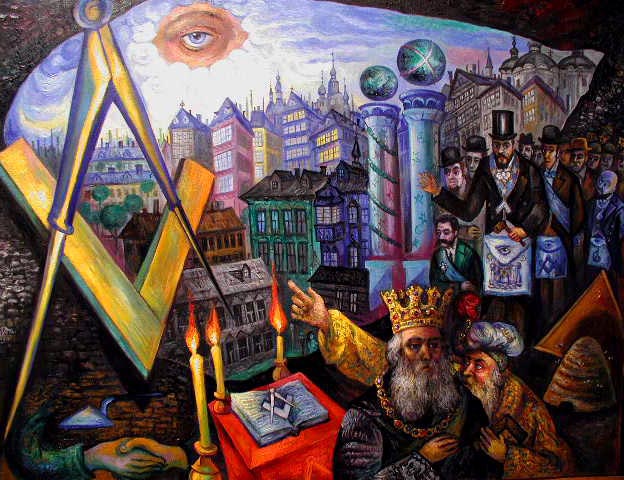p. 354
invention, and each insisted that they had borrowed nothing from any other people.
In Egypt and the East, all religion, even in its most poetical forms, was more or less a mystery; and the chief reason why, in Greece, a distinct name and office were assigned to the Mysteries, was because the superficial popular theology left a want unsatisfied, which religion in a wider sense alone could supply. They were practical acknowledgments of the insufficiency of the popular religion to satisfy the deeper thoughts and aspirations of the mind. The vagueness of symbolism might perhaps reach what a more palpable and conventional creed could not. The former, by its indefiniteness, acknowledged the abstruseness of its subject; it treated a mysterious subject mystically; it endeavored to illustrate what it could not explain; to excite an appropriate feeling, if it could not develop an adequate idea; and made the image a mere subordinate conveyance for the conception, which itself never became too obvious or familiar.
The instruction now conveyed by books and letters was of old conveyed by symbols; and the priest had to invent or to perpetuate a display of rites and exhibitions, which were not only more attractive to the eye than words, but often to the mind more suggestive and pregnant with meaning.
Afterward, the institution became rather moral and political, than religious. The civil magistrates shaped the ceremonies to political ends in Egypt; the sages who carried them from that country to Asia, Greece, and the North of Europe, were all kings or legislators. The chief magistrate presided at those of Eleusis, represented by an officer styled King: and the Priest played but a subordinate part.
The Powers revered in the Mysteries were all in reality Nature-Gods; none of whom could be consistently addressed as mere heroes, because their nature was confessedly super-heroic. The Mysteries, only in fact a more solemn expression of the religion of the ancient poetry, taught that doctrine of the Theocracia or Divine Oneness, which even poetry does not entirely conceal. They were not in any open hostility with the popular religion,. but only a more solemn exhibition of its symbols; or rather a part of itself in a more impressive form. The essence of all Mysteries, as of all polytheism, consists in this, that the conception of an unapproachable Being, single, eternal, and unchanging, and, that
p. 355
of a God of Nature, whose manifold power is immediately revealed to the senses in the incessant round of movement, life, and death, fell asunder in the treatment, and were separately symbolized. They offered a perpetual problem to excite curiosity, and contributed to satisfy the all-pervading religious sentiment, which if it obtain no nourishment among the simple and intelligible, finds compensating excitement in a reverential contemplation of the obscure.
Nature is as free from dogmatism as from tyranny; and the earliest instructors of mankind not only adopted her lessons, but as far as possible adhered to her method of imparting them. They attempted to reach the understanding through the eye; and the greater part of all religious teaching was conveyed through this ancient and most impressive mode of “exhibition” or demonstration. The Mysteries were a sacred drama, exhibiting some legend significant of Nature’s change, of the visible Universe in which the divinity is revealed, and whose import was in many respects as open to the Pagan, as to the Christian. Beyond the current traditions or sacred recitals of the temple, few explanations were given to the spectators, who were left, as in the school of nature, to make inferences for themselves.
The method of indirect suggestion, by allegory or symbol, is a more efficacious instrument of instruction than plain didactic language; since we are habitually indifferent to that which is acquired without effort: “The initiated are few, though many bear the thyrsus.” And it would have been impossible to provide a lesson suited to every degree of cultivation and capacity, unless it were one framed after Nature’s example, or rather a representation of Nature herself, employing her universal symbolism instead of technicalities of language, inviting endless research, yet rewarding the humblest inquirer, and disclosing its secrets to every one in proportion to his preparatory training and power to comprehend them.

Moe is the founder of GnosticWarrior.com. He is a father, husband, author, martial arts black belt, and an expert in Gnosticism, the occult, and esotericism.





